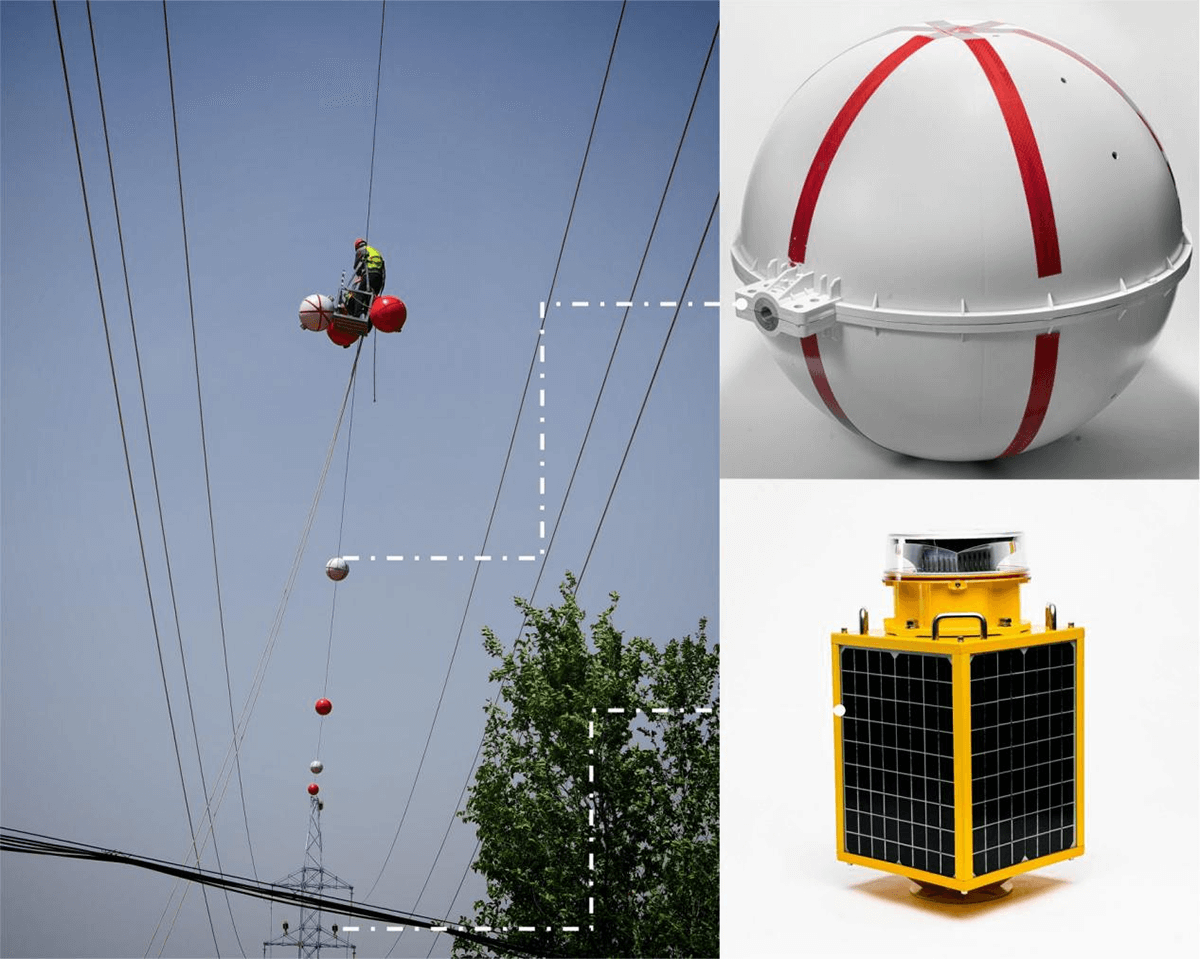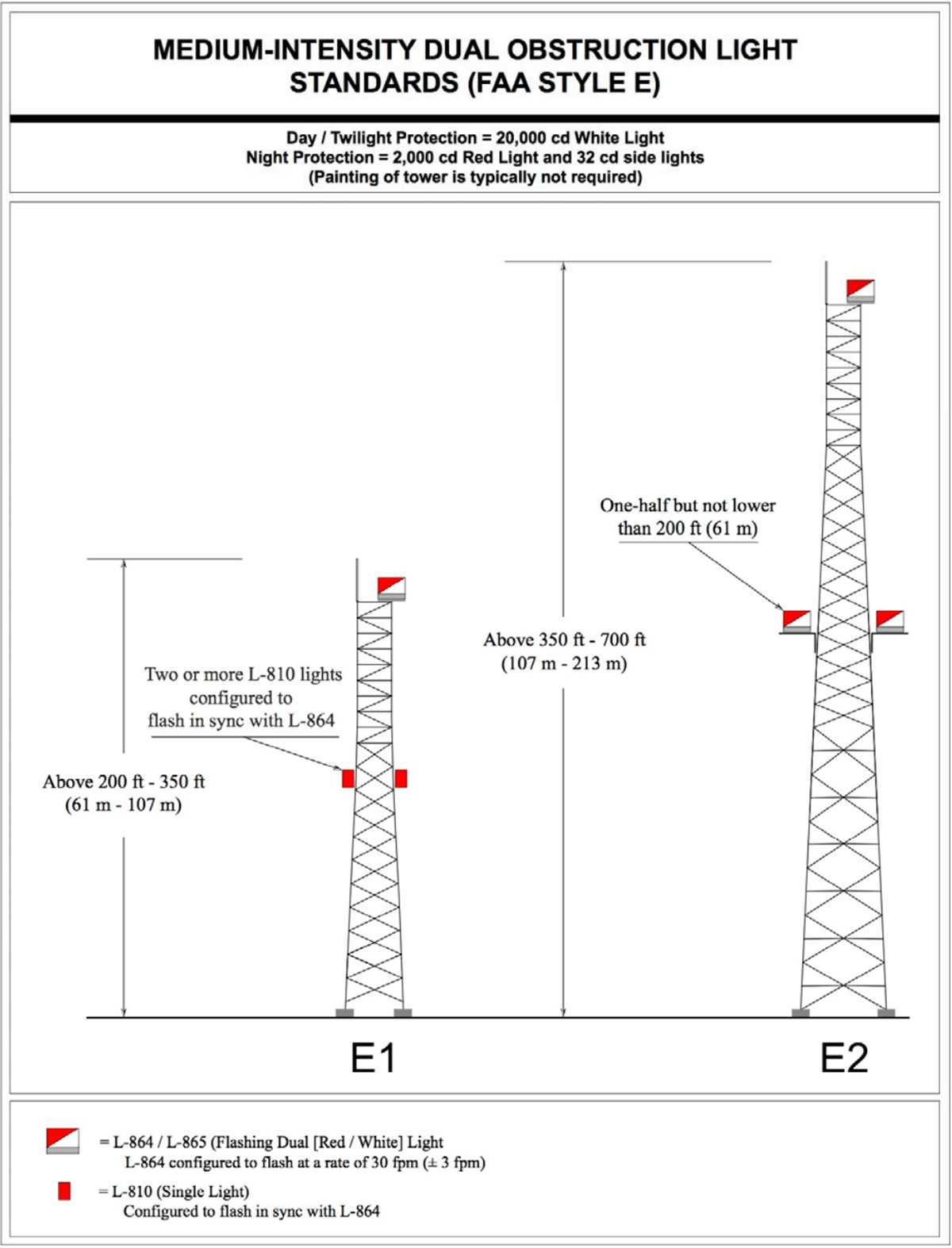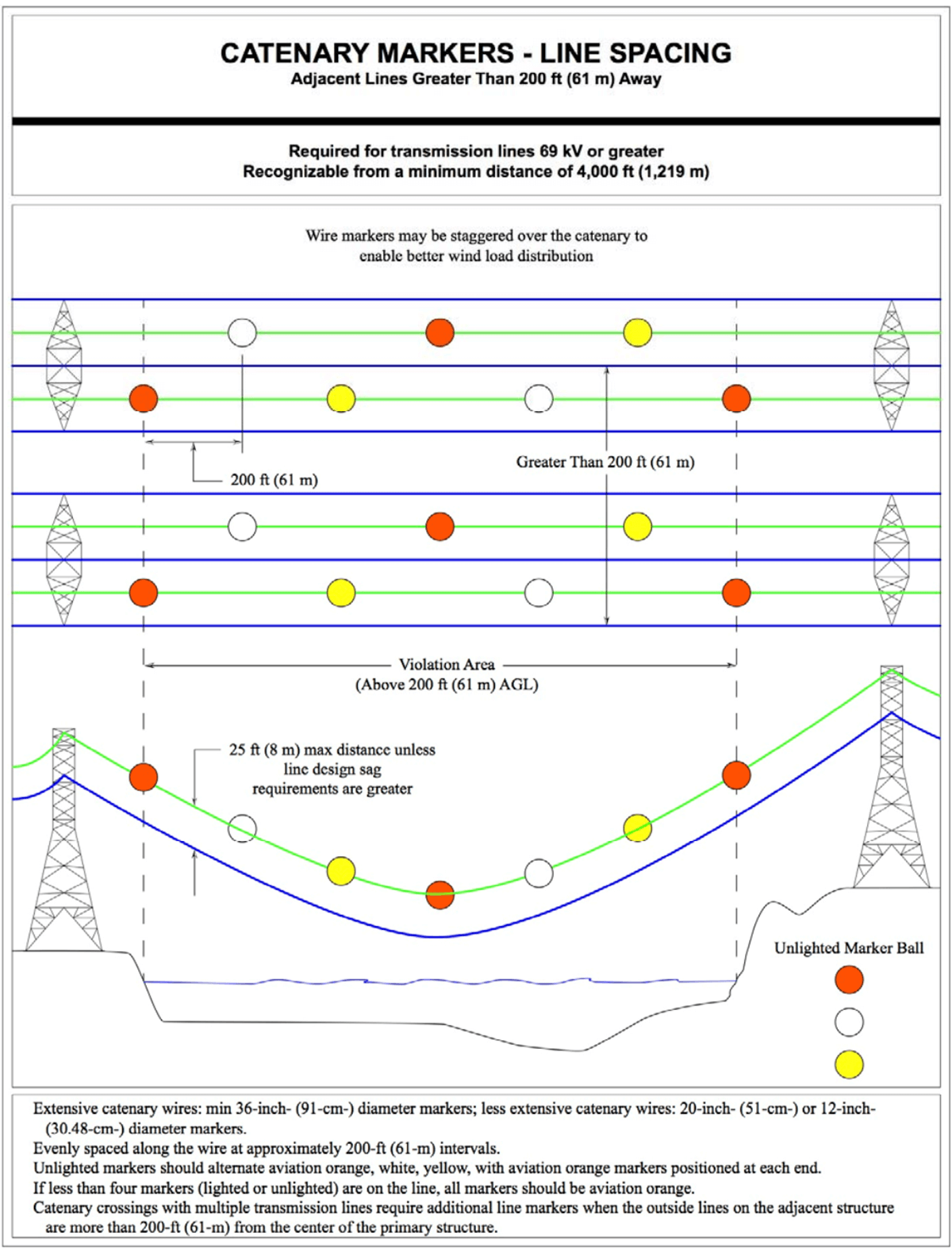
Installing obstruction lights and warning spheres on power towers is crucial for aviation safety, adhering to standards set by ICAO, CAAC, and FAA. The process varies based on tower height, with specific requirements for different heights.
Obstruction Lights Installation
1.Assess Tower Height:
● Below 45 meters: Install Type B low-intensity obstruction lights at the top of the tower.
● Above 45 meters but below 107 meters: Install Type B medium-intensity obstruction lights at the top of the tower and Type B low-intensity obstruction lights in the middle.
● Above 107 meters: Install Type A or Type AB medium-intensity obstruction lights at the top of the tower and Type B medium-intensity obstruction lights in the middle.
2.Preparation:
● Ensure the appropriate lights (Type A, AB, or B) are available based on the tower's height.
● Gather necessary tools: drills, mounting brackets, wiring kits, and safety gear.
3.Installation:
● Top of Tower: Mount the obstruction light using secure brackets, ensuring visibility from all directions.
● Middle of Tower: Measure accurately to position the middle obstruction light, securely mounting it similarly to the top light.
● Bottom of Tower (if required): Install additional low-intensity lights at the base or lower sections as per regulations.
4.Wiring and Testing:
● Connect the lights to a reliable power source, adhering to electrical safety standards.
● Test the lights to ensure proper functioning and visibility.

Warning Spheres Installation
1.Determine Installation Points:
● Measure and mark every 61 meters along the transmission line for the placement of warning spheres.
2.Mounting Warning Spheres:
● Use durable, weather-resistant materials to attach the warning spheres to the lines.
● Ensure each sphere is securely clamped and that its position is stable.
3.Safety Checks:
● Perform a visual inspection to confirm that all warning spheres are correctly spaced and securely fastened.
● Conduct periodic maintenance checks to ensure ongoing visibility and structural integrity.
Considerations for Wind Load Distribution
When installing wire markers, they may be staggered over the catenary to enable better wind load distribution. This method helps maintain the stability of the transmission lines and reduces the risk of structural damage.
By following these guidelines, power towers can be equipped with effective obstruction lights and warning spheres, significantly enhancing safety for both aviation and ground operations.

Post time: Jun-05-2024